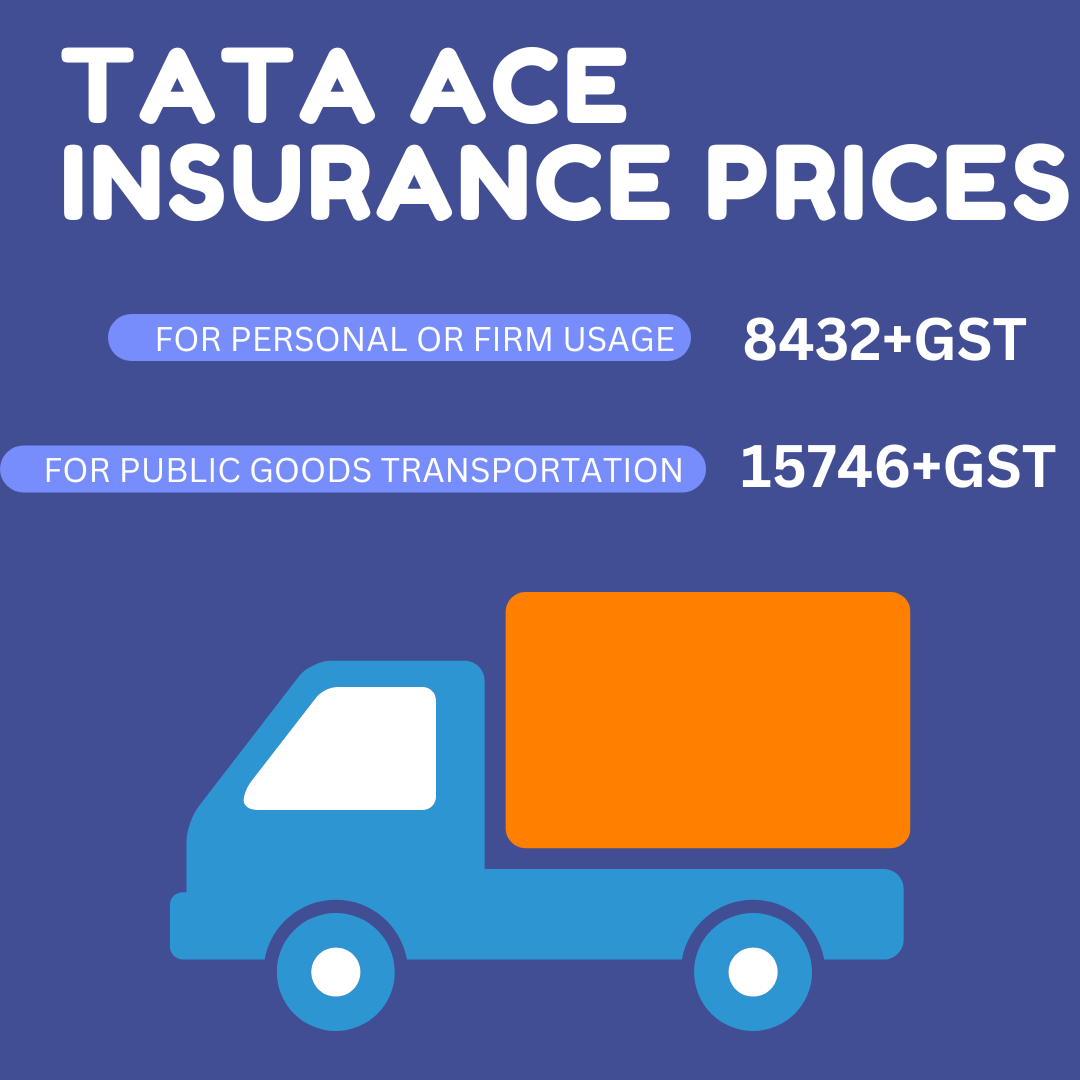When it comes to insuring your Tata Ace, understanding the cost can be crucial for budgeting and making an informed decision. Tata Ace is a popular light commercial vehicle in India, and its insurance cost can vary widely based on several factors. In this comprehensive breakdown, we’ll explore what influences the price of Tata Ace insurance and provide a general idea of what you can expect to pay.
1. Types of Tata Ace Insurance
Before diving into costs, it’s essential to understand the types of insurance available for Tata Ace:
Third-Party Liability Insurance: This is the most basic form of insurance required by law. It covers damages or injuries caused to third parties in an accident involving your Tata Ace.
Comprehensive Insurance: This offers broader coverage, including damage to your own vehicle, theft, natural disasters, and other risks not covered by third-party insurance.
Standalone Own Damage Cover: This policy focuses on covering only the damages to your Tata Ace, excluding third-party liability.
2. Factors Influencing Tata Ace Insurance Costs
Several factors affect the cost of Tata Ace insurance:
Certainly! Here’s the information formatted as a list:
Vehicle Model and Age
- Newer models or those with advanced features may attract higher premiums.
- Older vehicles might have lower premiums but could be more susceptible to damage.
Insured Declared Value (IDV)
- The IDV is the maximum sum assured by the insurance company in case of total loss or theft.
- A higher IDV results in higher premiums.
Coverage Type
- Comprehensive policies cost more than third-party insurance due to the wider range of coverage.
Add-Ons and Riders
- Optional add-ons like zero depreciation cover, roadside assistance, or engine protection can increase the premium.
Location
- Insurance costs can vary based on the region or city due to differing risk levels and regulatory factors.
Driving History
- A clean driving record can help lower premiums.
- A history of claims might increase the cost.
Usage Pattern
- The frequency and purpose of vehicle use (e.g., personal vs. commercial) can impact insurance rates.
3. Average Cost Estimates
While costs can vary, here’s a rough estimate of what you might expect:
The cost of third-party insurance for a Tata ACE varies depending on its use. For vehicles primarily transporting private goods, the insurance premium is approximately ₹8,432 plus GST. In contrast, if the Tata ACE is utilized for transporting public goods, the premium rises to around ₹15,746 plus GST. For vehicles used to carry firm or personal goods, the third-party insurance premium remains at ₹8,432 plus GST.
4. How to Save on Tata Ace Insurance
Compare Quotes: Use online comparison tools to compare quotes from different insurers and find the best deal.
Opt for Higher Deductibles: Choosing a higher deductible can lower your premium, but ensure you can afford the deductible amount in case of a claim.
Bundle Policies: Consider bundling your Tata Ace insurance with other policies, such as home or health insurance, to avail of discounts.
Avoid Unnecessary Add-Ons: Select add-ons that are relevant to your needs to avoid unnecessary costs.
5. How to Get a Quote
To get an accurate quote for Tata Ace insurance, you’ll need to provide:
Vehicle Details: Model, year of manufacture, and IDV.
Personal Information: Age, address, and driving history.
Usage Details: Whether the vehicle is used for personal or commercial purposes.
Most insurance providers offer online quote calculators that can give you a preliminary estimate based on the information you provide.
Conclusion
The cost of Tata Ace insurance can vary based on numerous factors, including the type of coverage, vehicle specifics, and personal details. By understanding these factors and exploring your options, you can make an informed decision and find a policy that fits your needs and budget. Remember to regularly review and update your insurance policy to ensure it continues to meet your requirements and offers the best value.
For the most accurate and personalized quote, consider reaching out to insurance providers directly or using online comparison tools.
